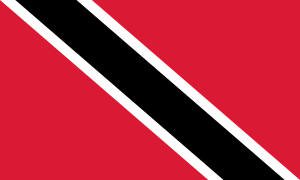Trinidadians

|
|
| Total population | |
|---|---|
| c. 4 million | |
| Regions with significant populations | |
|
|
|
|
|
223,639 (2013 est.) |
|
|
68,225 (2011) |
|
|
25,000 (2013 est.) |
|
|
1,260 (2006 est.) |
| Languages | |
| Trinidadian English, Trinidadian Creole, Tobagonian Creole, Trinidadian Hindustani, Antillean Creole French, Chinese, Arabic, Yoruba, Spanish, Portuguese, Carib, Tamil, Telugu, Trinidad and Tobago Sign Language | |
| Religion | |
| predominantly Christianity of various denominations, significant minority of Hinduism and Islam, Yoruba (Trinidad Orisha), Bahá'í, Rastafarianism, Judaism, Sikhism, and others | |
| Related ethnic groups | |
|
Trinidadian American, Chinese Trinidadian, Afro-Trinidadian, Afro-Caribbean, Indo-Trinidadian, Indo-Caribbean, Indo-Caribbean American, British Indo-Caribbean people, Trinidadian Canadians, Trinidadian British, Trinidadian Australian, Caribbean people |
|
Trinidadians (also Trini) are the people who are identified with the country of Trinidad and Tobago. The country is home to people of many different national, ethnic and religious origins. As a result, Trinidadians do not equate their nationality with ethnicity, but with citizenship and cultural identification with the islands, or with Trinidad or Tobago specifically. Although citizens make up the majority of Trinidadians, there is a substantial number of Trinidadian expatriates, dual citizens and descendants living worldwide.
The ethnic composition of Trinidad and Tobago reflects a history of conquest and immigration. While the earliest inhabitants were of Amerindian heritage, since the 20th Century the two dominant groups in the country were those of South Asian and of African heritage. Indo-Trinidadians make up the country's largest ethnic group (approximately 37.6%). They are primarily descendants from indentured workers from India, brought to replace freed African slaves who refused to continue working on the sugar plantations. Through cultural preservation some residents of Indian descent continue to maintain traditions from their ancestral homelands.
Afro-Trinidadians make up the country's second largest ethnic group, with approximately 36.3% of the population identifying as being of African descent. People of African background were brought to the island as slaves as early as the 16th century. 24.4% of the population identified in the 2011 census as being of "mixed" ethnic heritage. There are small but significant minorities of people of European, Chinese, and Arab descent residing in Trinidad and Tobago.
The total population of Trinidad and Tobago was 1,328,019 according to the 2011 census, an increase of 5.2% since the 2000 census. According to the 2012 revision of the World Population Prospects the total population was estimated at 1,328,000 in 2010, compared to only 646,000 in 1950. The proportion of children below the age of 15 in 2010 was 20.7%, 71% was between 15 and 65 years of age, while 8.3% was 65 years or older.
Emigration from Trinidad and Tobago, as with other Caribbean nations, has historically been high; most emigrants go to the United States, Canada, and Britain. Emigration has continued, albeit at a lower rate, even as the birth-rate sharply dropped to levels typical of industrialised countries. Largely because of this phenomenon, as of 2011, Trinidad and Tobago has been experiencing a low population growth rate (0.48%).
...
Wikipedia
